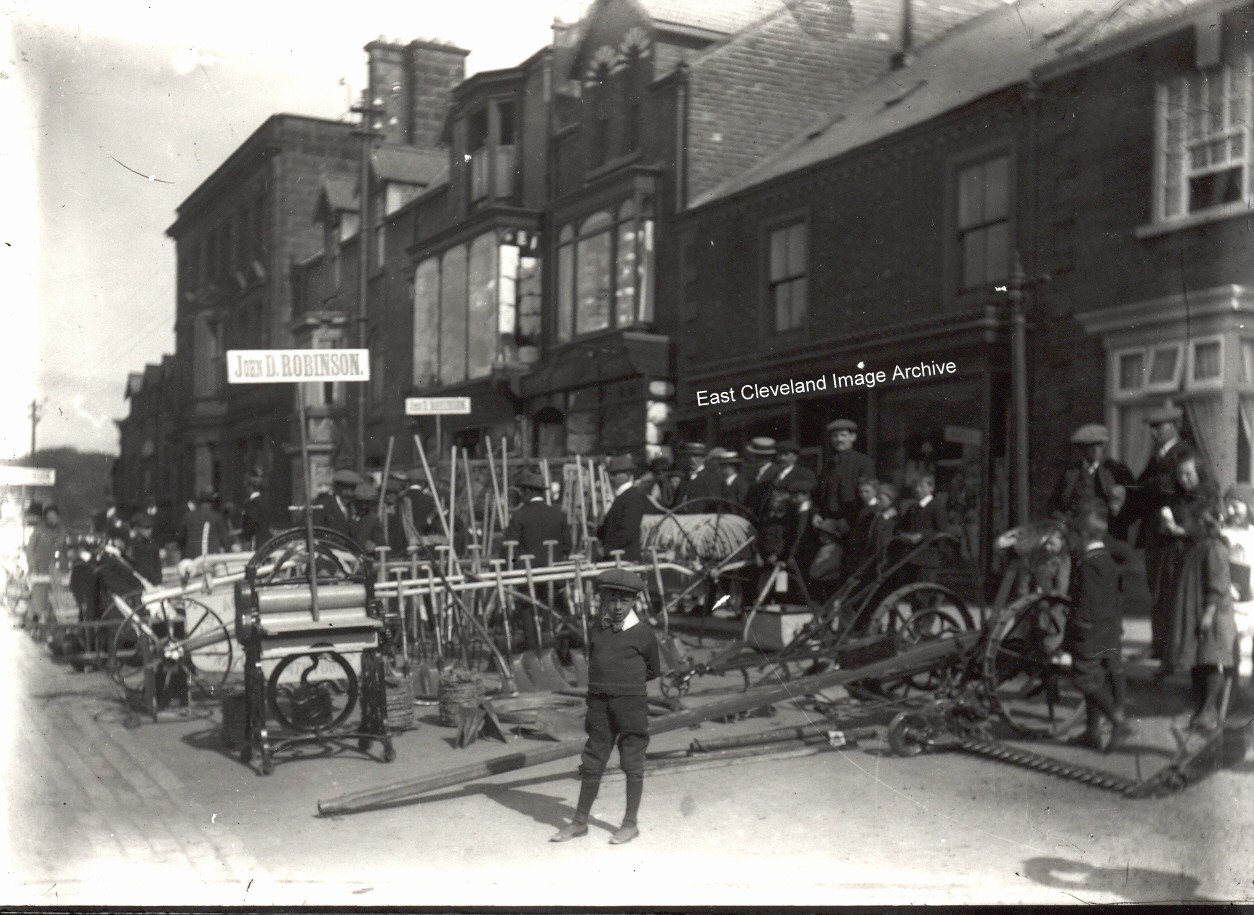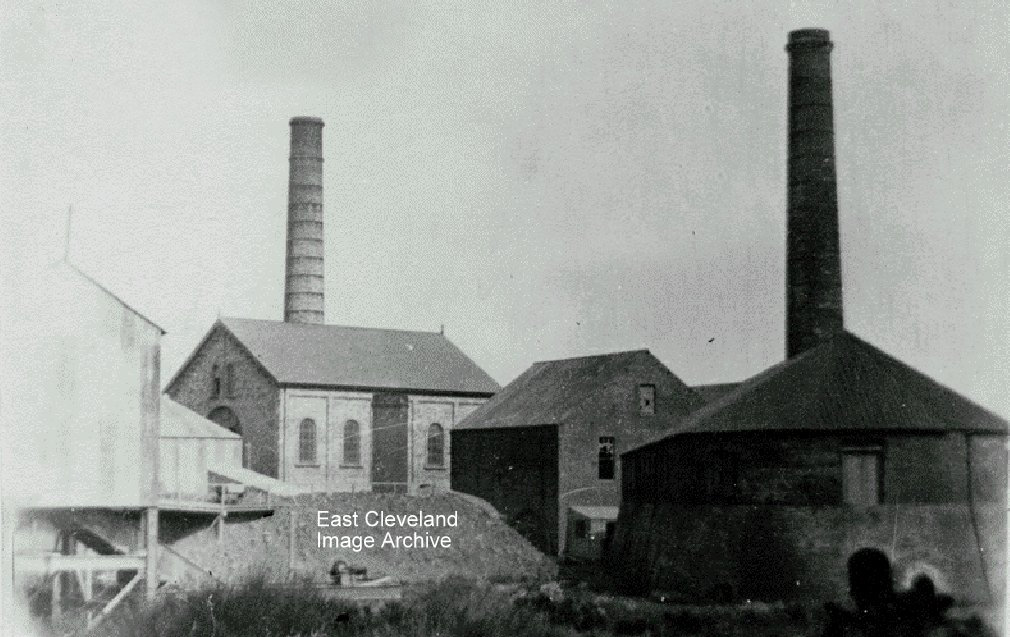
Another view of the same fair – this time with the obligatory urchin posing in the shot.
|
|
||
|
Another view of the same fair – this time with the obligatory urchin posing in the shot.
The Victoria County History – A History of the County of York North Riding: Volume 2 1923 – among the description of Loftus, includes:”A yearly wool fair is held in June.” However William White’s History and Gazetteer 1840 states: ”A market is held every Thursday, and fairs for cattle on June 24th and 25th, and on the Thursdays before May-day and Martinmas.” So although we appear to yet another image of Loftus Wool Fair – it is possible many other activities were going on at the same time, hence the variety of stalls and well dressed nature of all attending. Could this possibly include a hiring fair? Image courtesy of Olive Bennett.
The annual Loftus Wool Fair was the greatest event of the year for the town. It was held for two days, beginning on the Friday nearest to 25th June. On that occasion families from all round the area met in Loftus to join in the activities. The fair was held until the early 1930’s. The Cleveland Village Book written by the Cleveland Federation of Women’s Institutes tells us: ”Loftus has been a market town for many years and has always provided a focal point for the outlying areas. The ancient Wool Fair continued until fairly recently, the final one being in 1938, with the advent of the Wool Board. A committee was formed to revive the Wool Fair and in 1989 a very successful attempt was made to do so, although the inherent ’wool’ of the Wool Fair was replaced by a feeling of celebration of an old market rather than the selling of the fleeces as in the old days. There is a building: situated between the present Post Office and the Town Hall which was previously the wool warehouse.” Image courtesy of Joan Yeoman.
A view of the South side of the Market Place, the Market Place is obviously set out for a market or some sort of sale, with stalls on either side of the road. The image is from the book of views of Loftus; ”Cooke’s Views of Loftus and District”. Image courtesy of John G. Hannah.
An excellent image of the Golden Lion Hotel, the Regal Cinema and we can also see the Barclay’s Bank, quite a few pedestrians about but not much traffic. Believed to date from the 1950s, the Archive would welcome assistance in dating the image?  A good image of the engine house at Lingdale mine. The brick-kiln (and associated brick wheel) was part of an attempt to make the mine profitable (especially during slack times). It wasn’t particularly successful, but probably contributed enough to prevent total closure of the mine. Lingdale mine was the deepest mine in the Cleveland system and also at the poorest yield, there being a large band of shale splitting the seam in two. This resulted in the huge shale heap which took forever to dispose of! Lingdale village was described as almost derelict in the late Victorian era, the difficulty of winning the stone meaning that the mine was closed more often than in production. Paul Stonehouse tells us: My Granddad worked in quite a few or the East Cleveland Ironstone mines for most of his working life from a young boy to retirement. His name was Douglas Stonehouse and he lived as a young man in Lingdale and then later in Brotton. I know from stories he told me as a young lad that he was an ‘overman’ at one of the mines and I seem to think it was Kiltonthorpe but I can’t be sure. Any information or web sites etc would be greatly appreciated.” Peter Appleton comments: “I am not sure that the statement about Lingdale being the deepest mine is true. Peter Tuffs, in his “Catalogue of Cleveland Ironstone Mines” (pub. April 1999) gives the following depths for shafts: Lingdale 628 feet; North Skelton 740 feet 6 inches. Image courtesy of Maurice Grayson, tany thanks to Paul Stonehouse for that update and query; also to Peter Appleton for the hard facts.
This image must be from the late 1980’s (electric lawnmower) so can this young lady identify herself? I bet that grass took some cutting! Linda Cocks has come to the rescue: “This little lady is my daughter, Emma born 1986; granddaughter of Doris Johnson. So this picture must of been taken 1989 or 1990.”
A unique piece of the history of Boulby Potash – the day-to-day dross seldom gets preserved – dating from 1970. Image courtesy of Alan Franks.
A pristine locomotive – another A8, number 69883 – pictured at Battersby Junction in the 1950’s. Battersby Junction is now a station on the Middlesbrough to Whitby, Esk Valley line; it was originally the junction for the line which connected with the Rosedale ironstone mines. Location identification courtesy of Simon Chapman.
Simon Chapman has advised: “This is quite a well-known picture of North Skelton Junction. The train, hauled by a J27, is coming down the gradient from Brotton towards Saltburn. The line to the right served North Skelton Mine but had originally gone through to Priestcrofts Junction near Boosbeck.” Chris Davies advises:”Engine number would be in the 65780-65894 range as it is of BR Class J27 0-6-0.” Re-posting the image has enabled the Archive to advise that the engine number is 65788. Thanks to Simon Chapman and Chris Davies for this information; also thanks to Ian Pearson for noticing the slip of the fingers in entering the locomotive number. |
||
Recent Comments